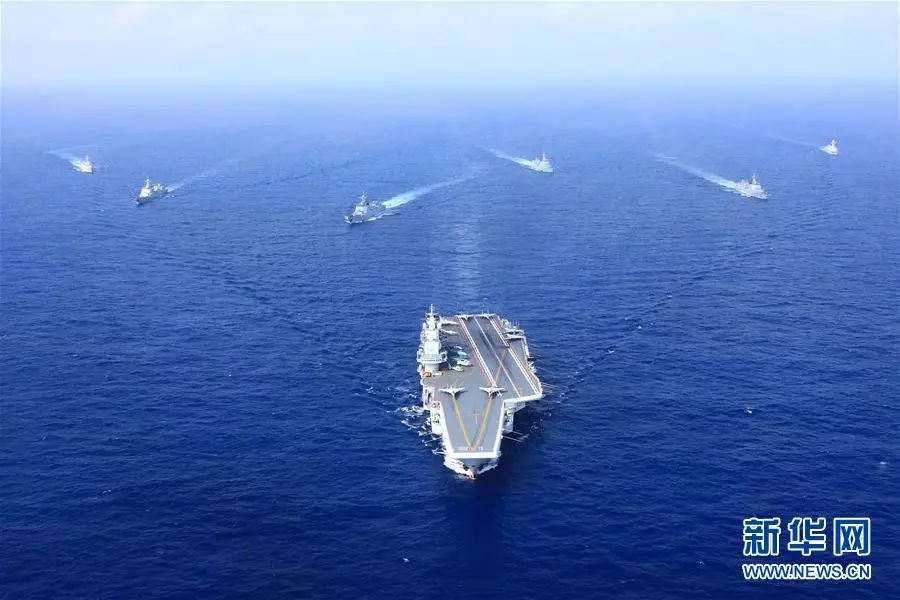


The CNS Liaoning aircraft carrier battle group in the Western Pacific (Photo/Xinhua)
Yesterday, China released a white paper to help the international community better understand its national defense policy in the new era. Among other things, the white paper highlighted that China will never seek hegemony, expansion, or spheres of influence.
The six-section white paper begins with a section about the profound changes which are taking place in the world and warns about destabilizing factors and uncertainties in the international security environment, saying that international security system and order are undermined by growing hegemonism, power politics, and unilateralism.
The Trump administration has brought the idea of great power competition back from the grave, which has led to a rise in strategic competition. The US National Security Strategy, the US National Defense Strategy, and US Vice President Mike Pence’s “China Policy” speech have all set the stage for more competition.
Realistically speaking, China’s military poses a serious challenge to US hegemony. This is why the United States is trying to contain China and is increasing its military pressure on China. However, this strategy has also increased tensions between the two giants and raised fears that a military clash is on the horizon.
China has no intention to challenge the United States for military supremacy. China is a rising military power, this is a fact, but its national defense strategy still is defensive in nature. Even in the face of an increasingly hostile Washington, China has not adopted a radical national defense policy.
On the other hand, China must be able to defend itself against possible threats. The United States has the most powerful military in the world and US President Donald Trump has emphasized US military might. In December, 2017, less than a year after taking office, Trump outlined the “America First” national security strategy, describing China and Russia as “rival powers” to the United States. There are also hawks in Washington trying to provoke conflict between the two sides.
As we can see from the white paper, China and US have very different goals. China’s goal is not to “beat” the United States in a zero-sum game. In the white paper, China calls for “comprehensively promoting international military cooperation for the new era, and striving for a better world of lasting peace and common security.” China also stressed that the fundamental goal of its national defense in the new era is “resolutely safeguarding China’s sovereignty, security, and development interests.”
In contrary to a provocative and confrontational strategy, the Chinse defense strategy is clearly defensive in nature.
The difference between the two strategies is like night and day. From the white paper we can see that China does not have the same hegemonic mindset and it puts the focus on peace and development rather than an endless struggle for power and dominance. China has repeatedly stressed that it does not seek hegemony or expansion and it made this claim again in the white paper. If we want to better understand China’s national defense policy, then these declarations should be taken seriously.
 Fire brigade in Shanghai holds group wedding
Fire brigade in Shanghai holds group wedding Tourists enjoy ice sculptures in Datan Town, north China
Tourists enjoy ice sculptures in Datan Town, north China Sunset scenery of Dayan Pagoda in Xi'an
Sunset scenery of Dayan Pagoda in Xi'an Tourists have fun at scenic spot in Nanlong Town, NW China
Tourists have fun at scenic spot in Nanlong Town, NW China Harbin attracts tourists by making best use of ice in winter
Harbin attracts tourists by making best use of ice in winter In pics: FIS Alpine Ski Women's World Cup Slalom
In pics: FIS Alpine Ski Women's World Cup Slalom Black-necked cranes rest at reservoir in Lhunzhub County, Lhasa
Black-necked cranes rest at reservoir in Lhunzhub County, Lhasa China's FAST telescope will be available to foreign scientists in April
China's FAST telescope will be available to foreign scientists in April "She power" plays indispensable role in poverty alleviation
"She power" plays indispensable role in poverty alleviation Top 10 world news events of People's Daily in 2020
Top 10 world news events of People's Daily in 2020 Top 10 China news events of People's Daily in 2020
Top 10 China news events of People's Daily in 2020 Top 10 media buzzwords of 2020
Top 10 media buzzwords of 2020 Year-ender:10 major tourism stories of 2020
Year-ender:10 major tourism stories of 2020 No interference in Venezuelan issues
No interference in Venezuelan issues
 Biz prepares for trade spat
Biz prepares for trade spat
 Broadcasting Continent
Broadcasting Continent Australia wins Chinese CEOs as US loses
Australia wins Chinese CEOs as US loses